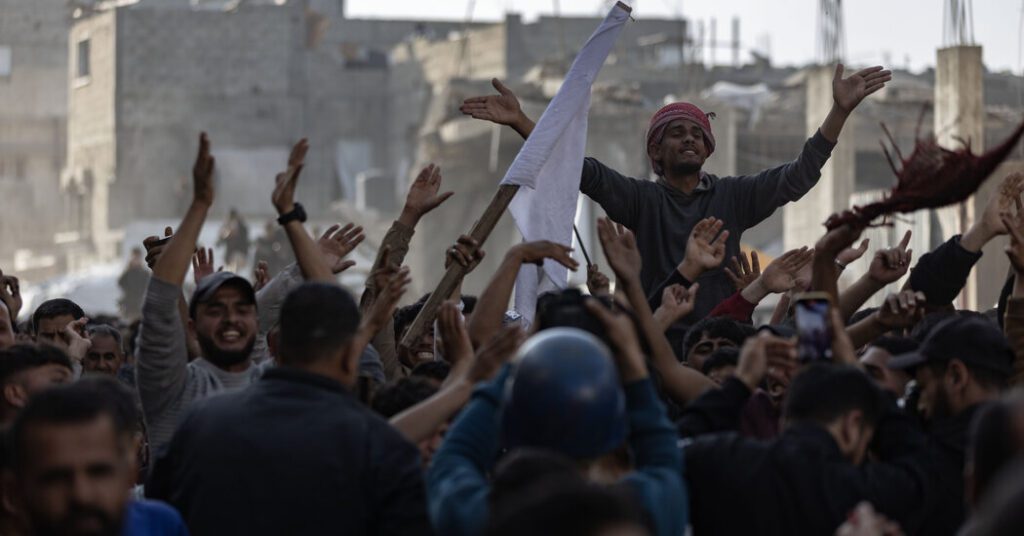Growing Dissent in Gaza: Protests Against Hamas Amid Humanitarian Crisis
This week, a significant demonstration took place in Beit Lahia, northern Gaza, marking a rare public display of dissent against Hamas. Thousands of Palestinians gathered, demanding the militant group’s withdrawal from control of the region and an end to the ongoing conflict with Israel.
Demonstrations Emerge Amidst Violence
According to eyewitness accounts, this protest is among the few recent rallies to gain traction despite Hamas’s history of suppressing opposition through intimidation. Unlike previous protests, women participated in this demonstration, some accompanied by their children, reflecting a growing frustration within the community.
The Context of Protests
These protests arise during a period of heightened conflict following Hamas’s surprise attack on Israel in October 2023. The subsequent Israeli military response has devastated Gaza, resulting in significant casualties and a severe humanitarian crisis, compelling residents to voice their grievances against both Hamas and Israel.
Voices from the Ground
On Wednesday, protester Abeer al-Radeea shared her sentiments, stating,
“We have lost our homes, our loved ones, our hope and our future. Enough is enough. We call on Hamas to stop this and leave us. We don’t know when this will end, but we want peace and democracy.”
Hamas’s Response and Suppression Tactics
Despite the demonstration’s growing size—estimates range from 1,000 to 1,500 attendees—fear permeates the region due to Hamas’s past violent reprisals against dissenters. Analysts suggest that though the group’s response to recent protests has been less aggressive, it still fears further unrest among an increasingly discontented populace. However, reports indicate a lingering threat as Hamas continues to monitor potential protestors closely.
Retaliation Against Protesters
Following the rally, reports emerged of armed Hamas operatives abducting demonstrators. Oday al-Rabi, a participant in the protests, was reportedly taken from a shelter in Gaza City, later found severely injured and pronounced dead soon after. His brother, Hassan, indicated that Oday was targeted for both his protest involvement and prior criticisms of the group.
Challenges of Daily Life and Escalating Needs
Many protestors highlighted the economic struggles exacerbated by the ongoing conflict. As food and resources dwindle in Gaza, the demonstrations are also fueled by hunger and desperation. With markets largely empty and prices soaring, participants expressed their frustrations towards both Israeli policies and Hamas’s governance.
Public Sentiments towards Hamas
Participants like Basem Hamouda emphasized the importance of accountability, asserting,
“Those who cannot provide their people with a loaf of bread have no right to start a war in the name of liberation.”
As calls for protests echo on social media, many demonstrators feel caught between a hard place—stonewalled by both the Israeli blockade and Hamas’s iron-fisted rule.
Conclusion: A Complex Struggle
The ongoing protests symbolize a critical moment in Gaza’s socio-political landscape as residents urge for change amidst dire conditions. The local population grapples with the dual challenges of external conflict and internal governance, leading to increased demands for accountability and reform from their leadership.


